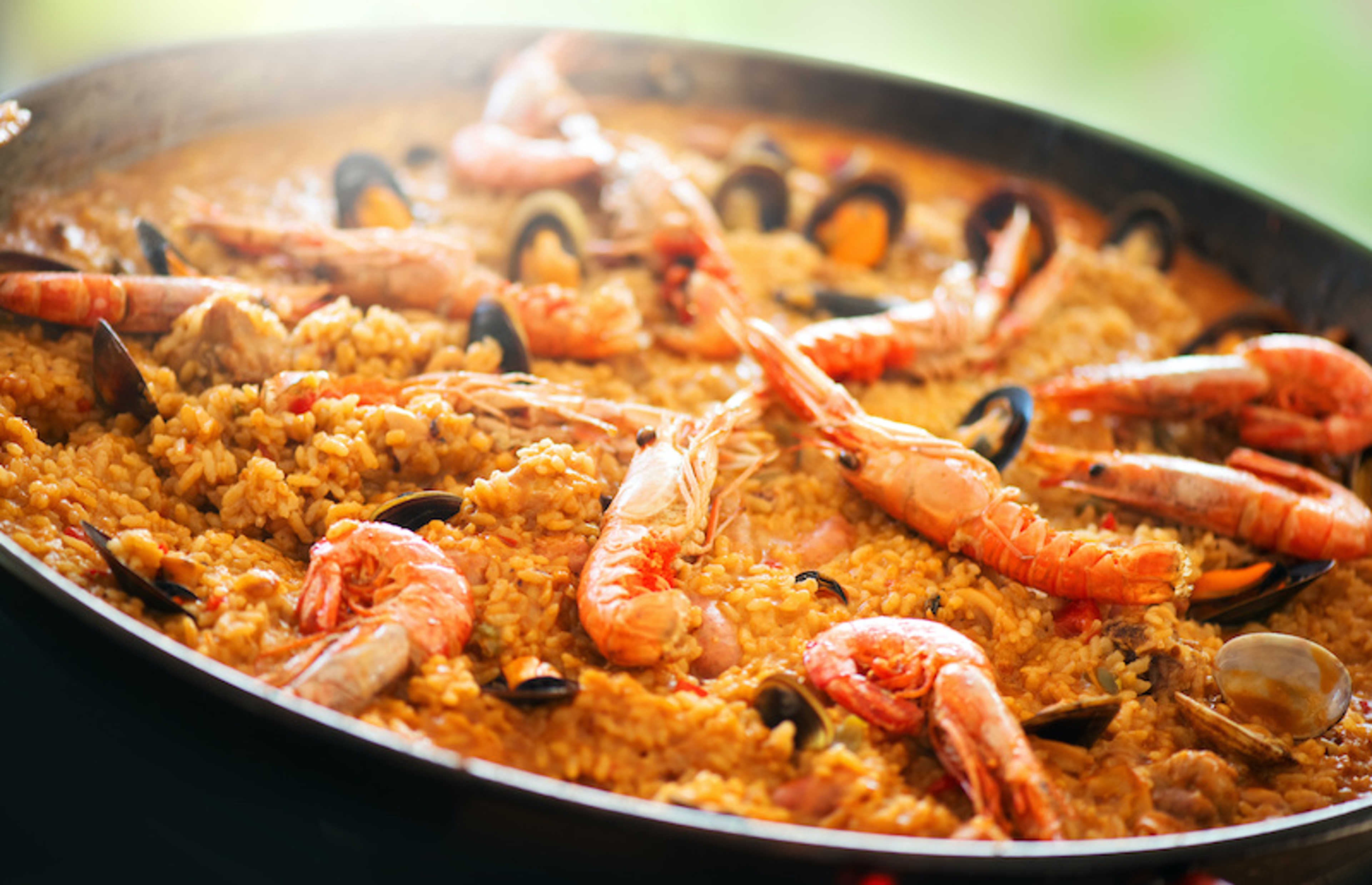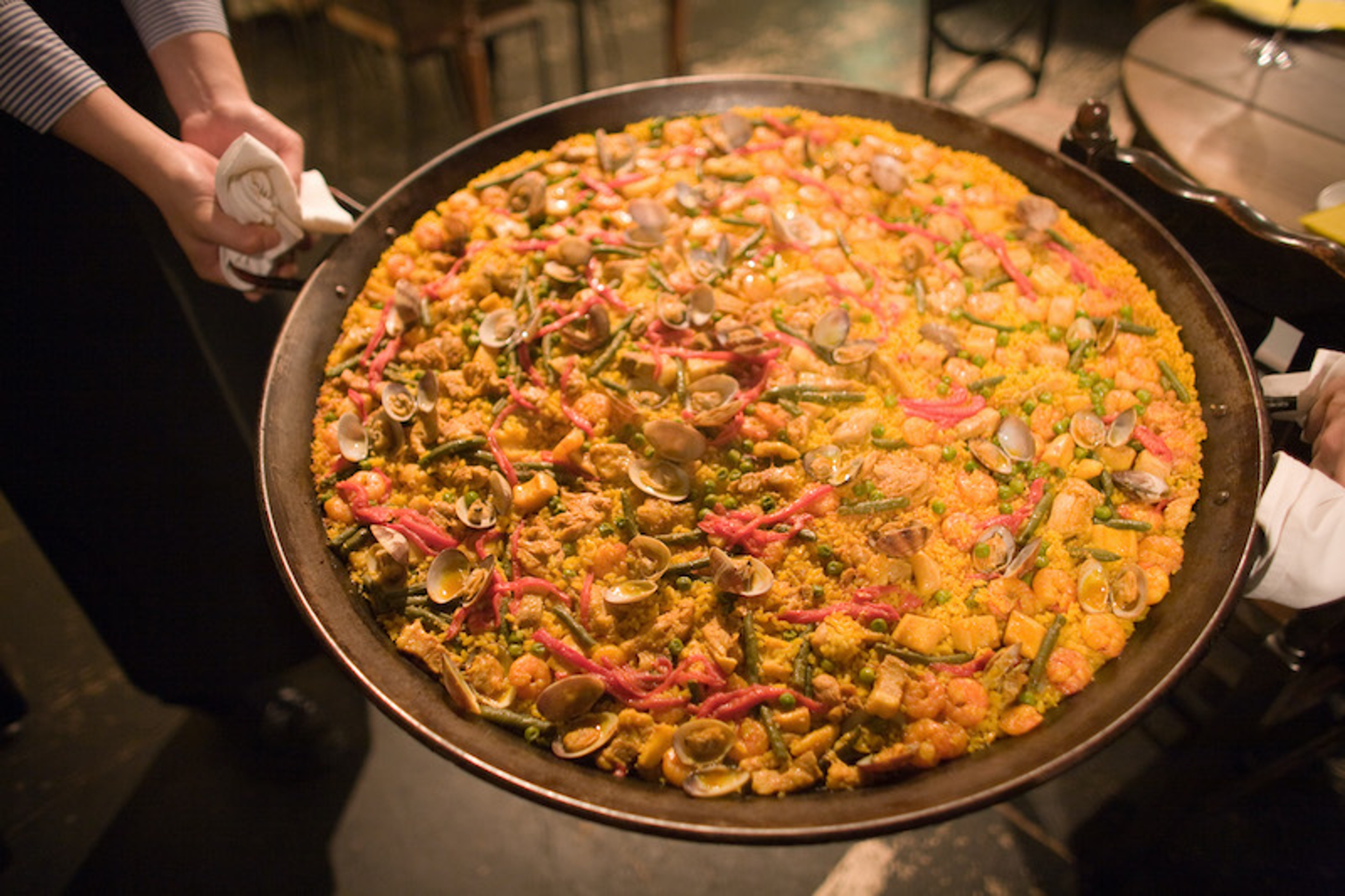The History of Paella
Paella was invented centuries ago, and has gone through many "revisions." Learn about the iconic seafood version.
Jul 21, 2022
Even if you haven't had the good fortune to visit Spain and sample its incredible gastronomic offerings, you've likely encountered its dish of crowning glory: the iconic paella.
And what could be more iconic than the image of a paella bursting with shellfish, prawns, and rings of calamari, surrounded by saffron-scented swirls of steam?
Tha said, you may be surprised to learn that Spain's most famous seafood dish did not originally contain seafood, though it originated in the Mediterranean coastal region of Valencia.
Fortunately, we all evolve, and one modern form of paella does indeed feature our favorite proteins from the sea.
Let's see how we got here.
Moor, please!
First off, there wasn't always rice in Europe. Scholars agree rice first appeared in the Western world around 330 A.D. That was thanks to Charlemagne's exploits throughout Asia. The cereal was already cultivated there as a native staple crop.
However, Spanish cultivation began in earnest in 711 A.D. That's when Moors from today's Morocco crossed the Strait of Gibraltar and captured modern Andalusia. (Bringing with them innovative concepts such as algebra, chemistry, gardening for pleasure, the concept of zero, and bathing, to name just a few.)
Moorish technology put Roman methods of crop irrigation to shame. It profoundly boosted food output in the Iberian Peninsula. Innovations such as advanced crop management, water delivery, and drainage systems improved olive production and allowed for the introduction of new crops like figs, dates, pomegranates, and apricots.
The Moors also shared a variety of spices and herbs, one of them the spicy, crimson soul of paella: saffron.
Crocus Hocus-Pocus
It's difficult to overstate saffron's value in both ancient and modern civilizations. It's called red gold. That''s not just because of its antioxidant-rich red hue. At times it has been worth more per ounce than actual gold.
Thethree strands in saffron are the stigma from the lovely Crocus sativus L. and they are harvested by hand to this day. Obviously, this is an extremely labor-intensive process, which accounts for its eye-popping price tag.

Saffron has been referenced in Greek pharmacopeia texts from the first century as a “useful" plant because of its medicinal properties, though early humans long prized saffron for its color. They used it as a pigment to create cave wall paintings that date back 50,000 years and can still be found in the caves of modern-day Iraq. Ancient elites and royals flaunted their wealth with saffron-dyed garments.
In spite of these popular uses, saffron's primary value is its ineffable flavor profile, somehow both strong and subtle, delicate and earthy, sweet, complex, and herbaceous.
n irresistible alchemy of the red gold of saffron and the arroz or rice mixed in a paella (the Valencian word for “pan") has formed a delectable daily tradition for centuries.
Valencian Victory
Like all traditional and beloved dishes, paella was born of necessity. In the marshy rice fields of Valencia, peasants found abundant protein in the form of snails, rabbits, and water voles. (What better method of pest management than to simply add the critters that intrude upon your crops to the lunch menu?)
Valencians closer to the coastline began adding eels to paella, launching the seafood additions that typify the Mediterranean diet. Seafood paella, or paella de Mariscos, may include any kind of crustacean, mollusk, or fish. It remains distinct from the earthy, meat-centric Valencian paella rooted in the daily communal lunches of agricultural workers.
To protect the original tradition, the Valencian regional government established a regulatory council of paella (rather like the French regulatory structure girding the integrity of bouillabaisse).
A true Valencian paella must contain the following 10 ingredients: olive oil, chicken, rabbit, flat beans, lima beans, tomato, water, salt, saffron, and Valencia riz (rice from the Spanish state of Valencia).
Acceptable additions include seasonal items such as artichoke and duck, and in the southern region, favorites are garlic, parsley, and rosemary.
Snails are also permitted, though some chefs insist that to prepare them properly, the snails must be fed exclusively rosemary days before they are cooked.
Spaish paella typically includes either land-based proteins or sea-harvested proteins, but the two are not combined outside of the commonly seen paella mixta found in tourist traps.
Valencian paella's cultural protected status is a fortress against perceived blasphemies such as the addition of chorizo or (gasp!) combining land and sea ingredients, additions that were popularized with the Spanish tourism boom in the 1960s.
However, with all due respect to the Valencian government, rules were made to be broken, and what could be more fun to argue about than food?
Socarrat to Me
No matter how heated the argument about what constitutes true paella and what doesn't, there's one point we can all agree on: to stir a paella is a cardinal sin. It deprives diners of the absolute pinnacle of palla delectableness: the socarrat.

During the cooking process, the broth from the unstirred rice and protein caramelizes at the bottom of the pan, forming a crust of toasted and toothy rice, known as the socarrat.
Scrping the bottom of the paella with a spoon is the pinnacle of paella pleasure!
As Easy as Paella
As the saying goes, every paella is a rice dish but not every rice dish is a paella. Don't let that intimidate you, though — it's the perfect accompaniment to your Sunday barbecue, and even the mistakes are delicious.
Earthy, fragrant, and complex, this legendary communal dish, rooted in peasant agriculture and foraging, is best enjoyed as it originated — cooked over an open wood fire outdoors, shared with friends and family.
Ready to give it a go? Here's a favorite seafood version, featuring squid, shrimp, and mussels.
(Cover Photo: Seafood Paella Feda Wong, CC BY 2.0, via Wikimedia Commons)







